Ad words – The New Age of Advertising

Ad words – The New Age of Advertising
Unless you are living under the caves or rock for the past twenty-five years, we bet you have seen all types of Google ads without even knowing that you are going through the advertisement. Maybe you were looking for a set of regular sneakers, and accidentally a discount on Google search led you to purchase a set of sneakers. Have you recognized that these were Google Ads?
Many of us will find it challenging to decode the process of Google Ads. However, the method gets much easier once you crack the ice gradually.
We will be looking at the:
- Different Google advertising terms
- Types of Google Ads
- How to boost sales using various formats
Let’s dive into the article.
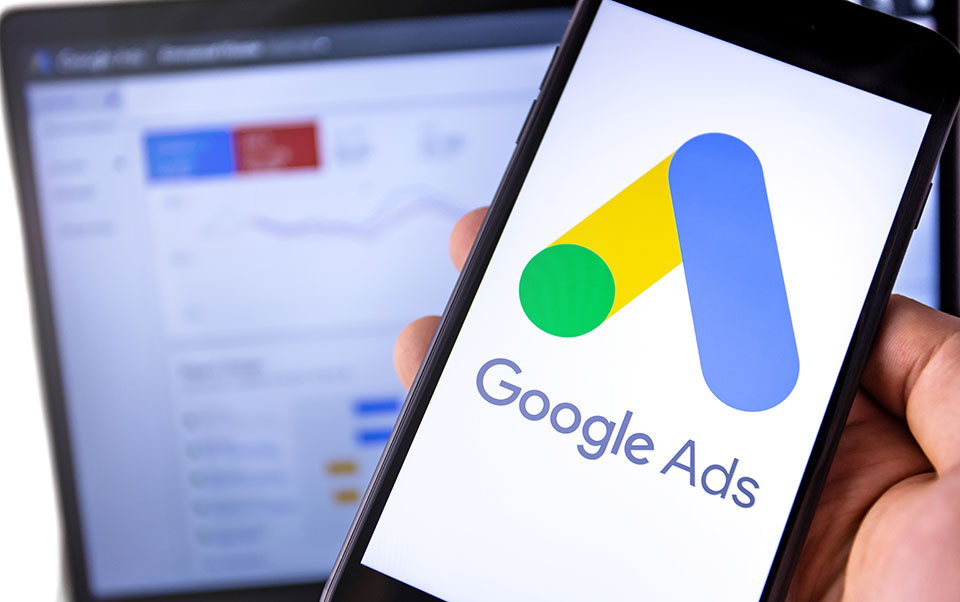
(Source- constructionbusinessowner.com)
Types of Google Ads or Ad words:
If we talk about the various kinds of Google Advertisement, there are eight Ad Campaigns with Google Ads or Ad words.
- Search Ads:
It reaches consumers engrossed in your product or service with text ads.
- Display Ads:
It runs various types of ads across the web or emails.
- Video Ads:
It engages and retains the viewers on YouTube and across the web.
- Shopping Ads:
It promotes product listings with shopping ads.
- App Ads:
It will kick your app promotion across Google’s Network.
- Smart Ads:
It will approach your marketing intentions with automatic ads on Google and across the web.
- Physical Ads:
It will help the customers to reach physically to your business location.
- Discover Ads:
It will promote your business when the Google feeds opens.
Terms associated with Google Ads or Ad words:
Before starting with the explanation of Google Ads, we will first progress and understand the terms associated with Google Ads to learn more about how Google Advertising works.
What are Google Ads?
Google Ads is an advertising service offered by Google, formerly known as Ad words. It helps the people to advertise the businesses with ads on Google search and across the Google Network. It gets based on a pay-per-click (PPC) where the advertisers need to pay per click.
Bidding:
The process of Google Ads resembles an auction. If you want to advertise your business on Google, you need to bid the price. It means you need to select the maximum amount of money you are willing to pay for an advertisement. Higher bidding means better ad placements.
Ad Campaign:
A set of various ads having the same budget, location, targeting, and other user settings.
Keywords:
Keywords are the phrases that describe your product or service. Keywords help us to determine where and when your ads will appear.
Conversion:
A user performs the action you wanted, leading to conversion. (Forming a buying, signing up for a newsletter.)
As you will start running the ad campaigns, you will learn more about various other terms. For now, the above terms are sufficient for knowing the basics of an ad campaign.
Varieties of Google Ad campaigns:
Now, if you are familiar with Google Ads terms, let’s dive into the different Google Ad Campaigns and understand them in detail.

Google Search ads:
It attracts people searching for your products.
Google search ads are text ads that appear to the potential targeted customers on the Google search engine result pages (SERPs). These ads either appear on the top or the bottom of the organic search results.
Best used for:
Getting in front of the people who search for your product or business.
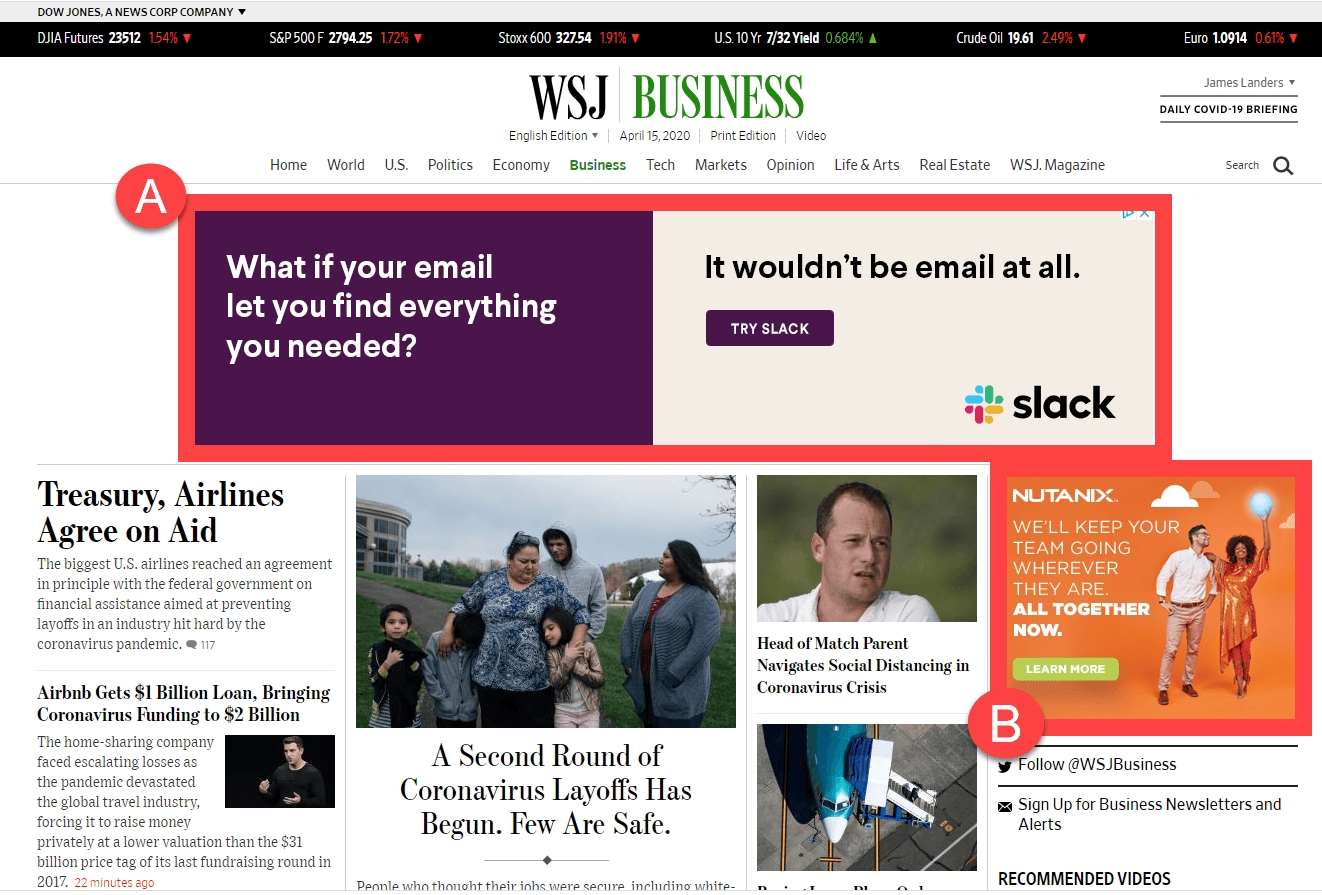
(Source-bluecorona.com)
Display Ads:
It generates brand awareness.
Display ads are different from search ads. Search ads help to find potential customers with the help of targeted keywords. Display ads are image-based ads that allow targeting the customers who are looking for similar types of products.
Display ad campaigns generally appear when you are browsing your favorite websites or even inside your email accounts.
Best used for:
Increase in brand awareness and reaching potential clients early in buying cycle.
Google Display Network:
Google uses the Google display network to show your display campaigns to potential customers. It is a network of more than two million web pages, apps, and videos.
You can set the target audience and the time of display ads to be shown.
The preferences are set according to the audience’s gender, age, and interests.
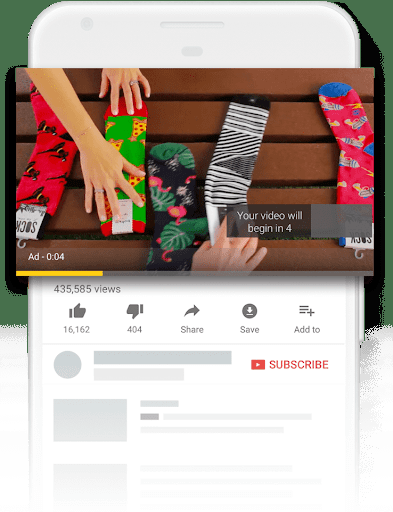
(Source- youtube.com)
Video Ads:
It helps to get in front of your target audience.
Since YouTube relates to Google, you can target your potential audiences on YouTube based on the algorithm. With 2 billion users online, you have a huge audience to target.
Your video ad campaigns are placed before, during, or after the video and in search results.
With the help of video ads, you can utilize demographic targeting and reach your ideal customers as per their age, gender, and interests.
During the video streaming, YouTube allows skipping the videos. It still has a five-second timer, which is enough to deliver the right message to your audience.
Shopping ads:
It helps in advertising to the shoppers who are ready to buy.
Google shopping ads are product-based ads. They are designed for product searches.
Shopping ads provide information about a particular product to the customers such as product title, price, store name before visiting the website.
Best used for:
Boosting the E-commerce traffic and increasing sales.

App ad campaigns:
It increases your app installations.
Are you having a mobile app for your business? If yes, you can sell it with Google’s most extensive network like Play store, YouTube, Search engines, and Google Display Network.
Best used for:
Creating ads to encourage the target audience for app installation.
BONUS: Discovery Ad Campaigns:
Discovery ads are a new type of Google ad that helps reach your target audience with the help of YouTube Home, watch next feeds, social tabs, E-mail accounts, and much more using a single ad campaign.
Wrapping up:
Congratulations, you have read everything that needs to be understood while working or knowing about ad campaigns. With different types of ad campaigns available, you must choose the ad campaigns wisely with proper format.
Last but not the least, you should check Google Analytics to see how well your Google ad campaigns are performing, and you may make the changes.
If you are looking for experts to guide you through the process, feel free to contact us.
Our Experts will connect with you in 24hrs to save you hassle and time.
With the vacations knock on your heels, this can be the instant to reinforce your Local SEO marketing for the season. Clients will close the doors to achieve purchases made well before the holidays and this will be key to optimizing the local SEO of your business in advance.
you’ll be coated by the subsequent Local SEO tips for the vacations that are ready by the team of digital marketing gurus.
# 1 Set your vacation hours:

Do you know that a mobile search for “store hours” arises throughout December and touches the peak on Christmas day? If you do not intend to change your store hours, it is still important to configure your holiday hours for each holiday.
If you do not configure your hours for the holidays, sites like Yelp and Google will alert customers that they may be mistaken for the holiday. The suggestion is to schedule your vacation hours immediately – before it is too late.
How to configure your vacation hours on Google My Business:
1) Log in to Google My Business.
2) If you have different locations, open the location you want to manage.
3) Click on the section on special hours.
4) Click Confirm the next hour of an upcoming holiday. Click Different Click Add New Date.
5) Key in opening and closing times for that day.
6) Glide the circle to “off” to indicate that the location is closed throughout the day.
7) If you are open 24 hours, select 24 hours from the menu that opens and select the one that emerges.
8) If you close the hours after midnight, be sure to set them correctly.
After entering all your special hours, choose Apply. Your special hours will only display to customers on Google for the allotted days.
To update the hours for your entire locations you can employ a spreadsheet following these instructions.
How to adjust your holiday hours on Yelp:
1) Log in to Yelp for business applications.
2) Go to Business Information and choose a special hour.
You can close your business for the day or open it at the time window. Special hours are set up on a daily basis, so include every day where your operating hours will typically be different from the hours listed on Yelp.
Setting your vacation hours for each holiday is important even if you do not intend to modify your store hours.
# 2 Increase your local pages for the holidays For Local SEO
82 percent of local searches are unbranded. People are looking for things like holiday hours, holiday-specific items, and holiday deals at this time of year. Your local pages are an ideal place to gather all this information.
By putting holiday information on your local pages, your brand will facilitate more web, local, and voice searches.
In fact, in the last 2 years, “I have” + “on-sale” mobile searches have increased by 250%. When users search for terms like “I have Black Friday sales”, Google scans your local pages to find the appropriate keywords and then uses that information to rank their local store.
This is a great time to rank for seasonal keywords that won’t last a year.
# 3 Be as communication and as accessible as possible:

Open communication lines about people-friendly features offered by your brand and how many of you work as:
- Local business listings
- Website
- The form
- Social channel
- Texts / messages
- Radio, local news, and TV media
- Phone On Hold Marketing
Google My Business Listing, in particular, is an interface that allows any customer to respond to who-where-and-why-if your business is handling them correctly, whether manually or by software Such as through stocking locally.
Anywhere a customer can discover everything you have to offer, be precise, and with lots of information about location, identity, hours of operation, culture, policies, and offerings.
From setting special hours for each of your locations to adopting Google Post to microblog holiday content to reassuring your social profile and website, advertising your USP, which is your highest communication effort in the current year I do.
In addition, make sure you conform to Google’s mobile-friendly criteria, and your website complies with the ADA so as not to leave any customers. Provide a quick, intuitive, and inclusive experience to maintain customer engagement.
With the need for social disturbances epidemic, use the Internet as your workhorse to connect and provision your community to the maximum extent possible.
# 4 Accept local e-commerce and product listings For Local SEO :
At the local business level, adopting a primary e-commerce function before the holiday season can also make a significant difference, if you can discover the most preferred methods of delivery. These may include:
1) Buy online, pick up curbside
2) Buy Online, Choose In-Store (BOPIS)
3) Online purchase for personal home delivery via internal or third party drivers
4) Buy online for mail delivery
There is a vast comparison to common e-commerce solutions, including free trials, and the E-Commerce column of the Moses Blog constitutes a free library of professional advice to maximize digital sales.
Keep your products everywhere. Remember that last April, Google stunned everyone by offering free product listings and they recently secured a pointy device, which allows you to convert scanned barcodes into online inventory pages.
In addition, in mid-September, Google took its next major product-related move by adding a “pass” filter to Google Shopping, taking you closer to the search engine to turn it into a source for real-time local inventory.
Adopt a public safety protocol that reviews GatherUp’s research, asking consumers to get their list online, find the easiest ways to get a purchase from their storefront in the hands of customers, and more of your efforts. More Q4 can make way for profit.
# 5 Stand apart from the crowd:

When talking about differentiating yourself from your competitors, keep in mind that unique content cannot just build your holiday sales.
People will be more likely to bring their business to their website if the site itself is simple to use and attractive to watch.
Sure, you’ll need some substantial, customized content on your pages, although if the pages themselves are crowded with text, ads, Flash content, or your JavaScript issues, it won’t load fast or look attractive.
The data demonstrate that problematic webpages are generated as a result of higher bounce rates and markedly lower sales.
Rather, keep your webpages comparatively simplified, with visually bright images that facilitate communication with your clients by your written content.
The adapted content must be precise and visually segmented to form a hierarchy of words and pictures.
Users should immediately know where to find the most useful information, and each successive element must be in contrast to the element closest to it to support the smooth flow of content sections.
A primary example: Suppose your holiday decor store is for the fourth of July.
You may want to employ a large image on your homepage that displays an assortment of patriotic and picnic items you have presented for sale.
Then some visually contrasting buttons are shown which users can click to enter specific categories of decorations.
Additionally, remember to update your website with holiday-relevant pictures and different displays. Revealing to the purchasers you’re operating with within the current season can build them feel higher to buy from your store.
Keyword-optimized content near these visuals can use pleasant, concise language that lets users know what is present and also adds them to add items on your list.
Just remember to make things easier.
A narrative-shaped item of content is neither necessary nor desired. Customers want to know what you have and why your portal is the best place to buy it, be it for your wide product selection or competitive prices.
The conclusion
Going up, there are many steps that you can adopt to do local SEO during the holiday season.
The steps vary administratively, such as adjusting inaccurate NAP information and updating your portal with holiday themes, with more in mind, such as how to get more prominent among your competitors and to visit your store Securing web shoppers for.
If you like, you can earn your own PR side by quoting (with no permission) some practical Google reviews related to your business on your portal and positive feedback on any negative feedback and online criticism.
Make sure everyone associated with your business knows that you care about compliments and complaints.
Are you running a small business? Say, a motorcycle mechanic shop, music shop, restaurant, hardware shop, etc. If you are, you can already feel how important local customers are to you. If you agree, then you should also know that when it comes to digital marketing, local SEO is an important element that you should not miss.
Local SEO is a powerful strategy that locally operated small businesses can use with just a few clicks to get by their local customers. If you are looking for or searching for potential customer services or products online, local SEO can help your small business appear without even a commercial website.
We mention local SEO tips to support your business in 2021:
The success or failure of your local SEO can be decided by this fundamental step. The first thing you need to do is what are the most relevant phrases and keywords related to your business. Be sure to include all locations, as well as products or services. When it comes to places, be sure to use any words or phrases associated with your area. This means that you have to keyword not only your city or city but also your region or country.
Create a GMB (Google My Business) profile
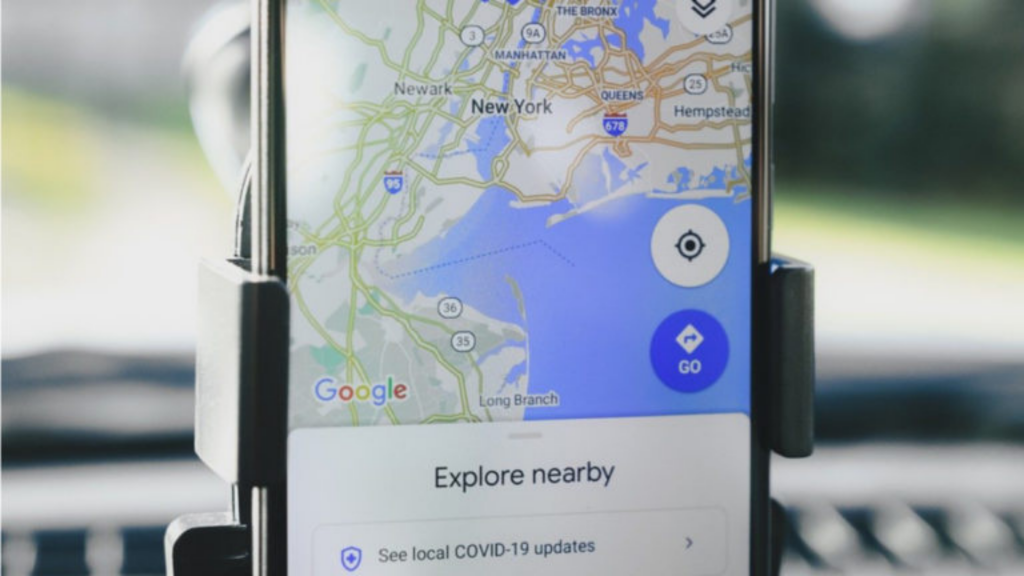
Google What is my business? This is a platform where locally operated small businesses can engage their customers on Google Maps and Google Search for free. Note that this is more than just a simple business listing. When you already have a profile on GBM, you can connect with customers through booking, follow, call, and click. You can also add photos. Remember that when filling in your details, it is better, so fill them in your account dashboard as much as you can.
Match your NAP (name, address, phone number) with your website on Google My Business
If you are improving your website’s ranking in the local search engine for your goal, place the same NAP on GBM with your website. Doing this will help search engines collect accurate data about your business, especially when you leverage a citation creation service from an SEO builder or any other SEO agency.
Maximize Title Tags and Meta Descriptions
When it comes to strengthening your on-page SEO, one popular factor you should consider is the page title tag. People can easily place it at the top of their browser tab. This allows users, including Google Bots, to get information about what they can expect after clicking a link to your website.
When it comes to title tags it is important to remember:
- In your page description, always include the target keyword.
- Keywords must be placed at the beginning.
- To achieve full performance on SERP, do not extend the length of the description beyond 60 characters.
- If possible, include the brand name.
The short information snippet is then referred to as the meta description. It also appears in SERP. Following are the things to remember about meta description:
- It should be kept fascinating, communicative, and unique.
- It should contain only 140–160 characters.
- Include your target keyword.
- Keyword stuffing should be avoided.
Optimize for voice search
These days, voice search is happening fast in many homes. Speaking by children, youth, and grandparents alike, this new discovery brings comfort. If you want to improve your local SEO, optimizing content for voice search is highly recommended. Observe how people make their inquiries while talking to their devices; This is how you optimize for voice search.
When typing topics of interest or questions, people usually write short keywords. However, they do the following when they are at liberty to voice their questions:
- Ask in the appropriate question format.
- Write long-tail keywords.
- Also, consider their equipment as a helper or a friend.
- Use a conversational tone when talking.
Explain search intent using more question words, including when, when, how, where, what, and why.
Use appropriate schemas
What schema markup does is help search engines understand information that is location-based structured like your NAP and others.
You should use the appropriate schema based on your local business type. The three supported formats when writing schema points for websites include RDFa, Microdata, and JSON-LD, the most recommended format.
Final Thoughts
Search engines, such as Google, use IP addresses and geolocation (location-based data) to provide the results that matter most to their end-users. This means that you can improve your online visibility in local search results by following the local SEO tips above to optimize your website.
Online marketplaces have the creation of websites or apps promoting purchases through various sources. Market operators do not have a list of their own, rather, their business involves presenting a list of different people to the customer and thus transacting.
The volume of Online Marketplaces has skyrocketed over the years as they provide true convenience to customers. A department store created will be a marketplace that is online. Since suppliers’ inventory is accessed electronically by users and does not have to be owned by the market before being presented to users, the entire product offered by the suppliers to consumers is not the same as the goods being presented to consumers. The relationship exists with real-time details. This can be a much wider selection than that offered by any shop.
Consumers prefer to employ apps from different retailers. Rather, they tend to download an application that offers a product range comparable to that offered by a single store. This makes the market extremely attractive.
There are some downsides to the market as well. As goods are being offered by many vendors, the detail about them often cannot be compared and the sending speed of the vendors is not constant. This can surprise consumers in a negative way. Ensuring the smooth operation of a market is meant to involve multiple suppliers at the same time and present it smoothly to consumers which is difficult to fulfill.
Vertical
Vertical marketplaces ask for goods from different sources, but they are all one of a kind. For example, some sell only jewelry and related accessories. The site does the important job of guaranteeing the genius and since jewelry is such a big part of a big-ticket product, it is a major value-adder. When entered on the portal, TrueFacet inserts the value by authenticating the reality of an item by entering some specific marker of each bit.
Horizontal
A wide variety of products are found in the horizontal market, although they all exchange one feature. For example, Panzo, another proponent in Shop, constitutes a market for fans. Chad Bilimer, CEO of Penzo, says that ‘belly dancer enthusiasts behave only as Porsche enthusiasts’. By presenting society, data, and infrastructure, Bilimer believes that Panzo will direct traffic to individuals to follow their passion for simultaneous purchase and incorporation from each other.
The Global
The global market reverses everything. Their passion is their assortment of products. On eBay, Seller Experience VP, Bob Coupons, told ShopTalk, you scale you get a transparent price, ‘if items are bought and sold adequately, users can see what is reasonably priced and they feel they are getting reasonable prices.
What is the motivational market?
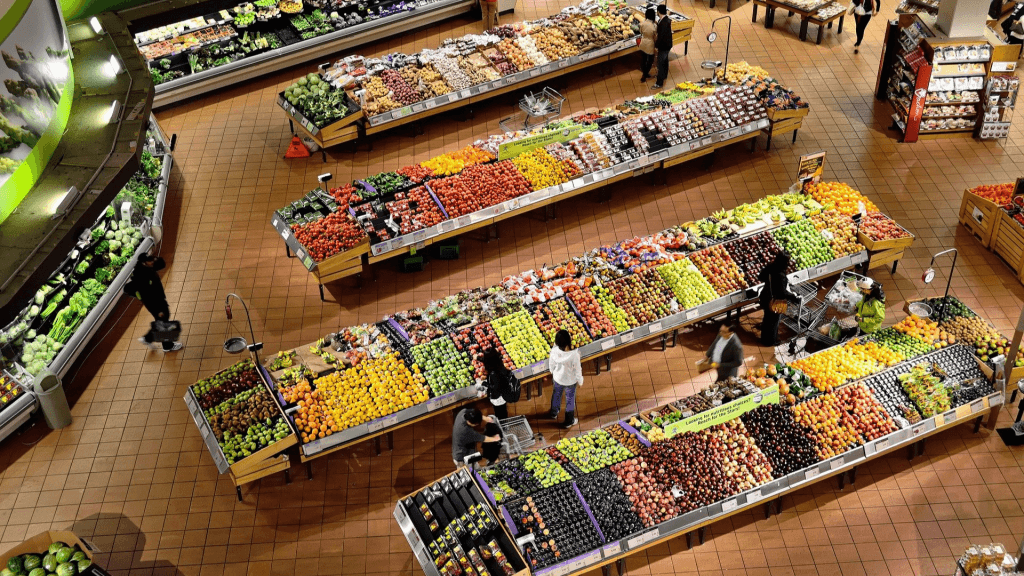
Currently, in almost all types of eCommerce, Prime Mover is Amazon.com. There is nothing as inspiring as a big competitor with practically limitless resources, technical capability, and capability. Amazon constitutes a mixed market, offering its individual products and to other firms while providing buyers and sellers a platform to transact on Amazon either by themselves or with support from a variety of Amazon.
There are also various different hybrid marketplaces. Many companies, large and small, currently, like Walmart, are the second-largest eCommerce site within the country, according to ComScore, allowing users to offer their personal items in markets that are mushrooming across multiple eCommerce portals Huh. If they function well, the marketplace becomes an affiliate with eCommerce portals to bring in more traffic, confirming more reasons for consumers to remain on the site for no reason.
As a drawback to the lack of department stores, marketplaces are among the areas that many-brand retailers are replacing. There is currently a barrage of marketers. Ian Friedman, co-head of Goldman Sachs Investment Partners, believes that the market must effectively achieve 3 things to thrive:
- Less friction in selling as well as selling to generate sufficient liquidity on both sides of the market
- Generate a greater degree of loyalty and openness to foster participation, and
- Design both dynamic and responsive mechanisms to deal with burning problems arising between market partners.
It is popular within the retail sector to explore the latest retail ideas and enhance the current way of the market. The prevailing trend is that with the passage of time, a shiver occurs, and simply survives the best. Ultimately the entire online marketplace will need to assure its retaining power by offering efficiency and distinctive value to consumers. Unsuccessful people will pack the same missing market ratio as department stores and eventually those markets will disappear.
Online Marketplace – Their Future
Think about making $ 37 billion and $ 683 million a year revenue. Traditional knowledge indicates that you need a large amount of inventory to sell that item. However, when GrubHub and Uber mentioned those numbers during 2017, they did not receive any single car or restaurant. They are just two examples of companies that have overturned the traditional market by groundbreaking gig economy business prototypes.
An online marketplace constitutes a digital space, where the two ends of a transaction are connected through technology and the officer or seller has no inventory, rather, they just support the transaction. Firms such as GrubHub and Uber clearly show that business is flourishing. The 75 largest online marketplaces grew by 30% during 2017, accounting for nearly half of the entire global online shopping.
Everything is available online
Online marketplaces will serve as the starting point for almost all communications consumers and businesses with goods and services. Consumers have demonstrated that they will buy and buy almost anything online, and marketplaces are growing to offer them more options and flexibility. Traditional businesses will adjust and tap the online marketplace to take their products and services to market. More and more numbers will come to view the marketplace as a fast avenue for the latest revenue streams or as an advancement of their current distribution model.
Maybe everything lies in one app
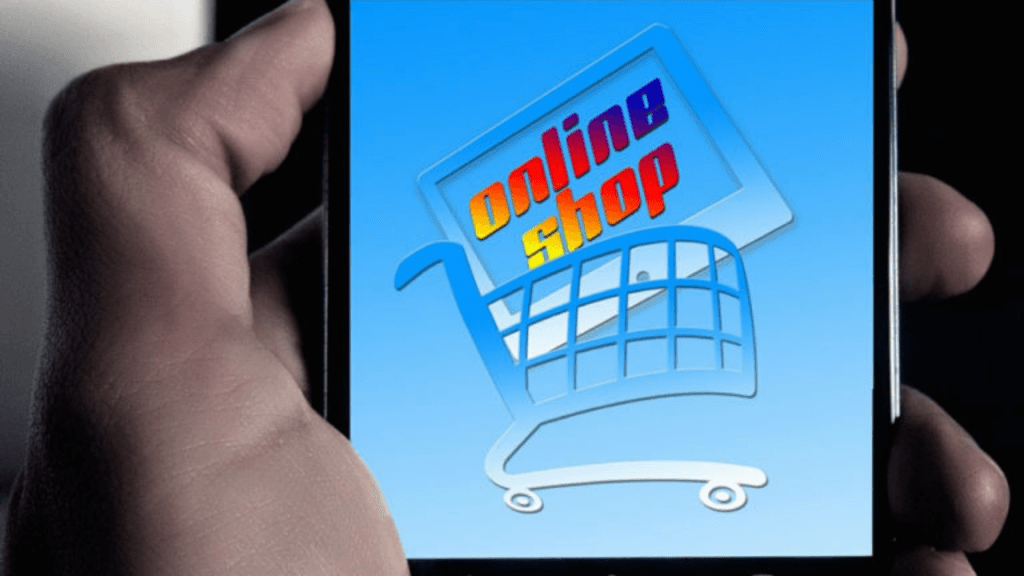
Markets that flourish will have speed and mobility at the root. Most marketplaces will prioritize apps, or rely only on apps. When you are the only app moving towards the future, you will start seeing past marketplace businesses looking at your website. There are already many who make their presence felt only by the app (eg, Uber, grocery delivery services).
Niche Is Vital
online marketplaces will still be more vertical and hyper-focused where they exist. While it is safe to assume that marketplaces will continue to grow, to maintain that they must focus on providing an incredible customer experience and provide value on each and all transactions.
Clickthrough will sign traditional e for standardized agreements. Online marketplaces will continue to adopt clickthrough agreements as there is no better way to reduce legal risk without affecting conversions. Marketplaces are engaging new customers and providers at an accelerated rate, and Clickthrough presents a scalable, organized, and frictionless experience that minimizes their risk and liability risk.
Conclusions
These predictions are closer to reality every day. A growing number of companies are joining the online marketplace space, apps are achieving standards, and a large number of business leaders are realizing the value of clickthrough agreements. We can just imagine the scenario five years from now.
Very often, Social Media and Social Networking are used mutually. However, there is a difference. It becomes important for us to understand such differences because only then you can use them with your full passion and positively influence your brand.
If you are thinking of developing a comprehensive digital marketing strategy, then you need to know what is the difference between why social media and social networking are not equal.
1) Introduction:
 Social media: It includes various forms of electronic communication, through which users usually form online communities. In addition, social media is used to share information, personal messages, content such as pictures and videos, ideas, and more. Simply put, social media uses the Internet and mobile technologies to encourage dialogue. Social media allows people to participate in online social networking.
Social media: It includes various forms of electronic communication, through which users usually form online communities. In addition, social media is used to share information, personal messages, content such as pictures and videos, ideas, and more. Simply put, social media uses the Internet and mobile technologies to encourage dialogue. Social media allows people to participate in online social networking.
Social networking: Social networks can be online or offline. The term refers to the creation and maintenance of online (maintenance or personal) relationships. Social networking has a social structure and consists of people who share the same interests. In short, social networks are dedicated websites or applications that validate users and encourage them to exchange ideas and information with the help of the Internet.
2) Communication:
 Social Media: Videos, user images, infographics, white papers, and so on communicate everything to generate engagement with followers. This is done with the ultimate goal of increasing interactions and encouraging the audience to take the desired call to action (CTA).
Social Media: Videos, user images, infographics, white papers, and so on communicate everything to generate engagement with followers. This is done with the ultimate goal of increasing interactions and encouraging the audience to take the desired call to action (CTA).
Social Networking: This is usually a give-and-take relationship. If the user is part of a community, they will have to post about their brand and talk about themselves to others. Social networking means connecting you with others.
3) End goals:
 Social Media: With this, the bottom line is lead generation and data acquisition. This happens with the ultimate goal of increasing sales for eCommerce.
Social Media: With this, the bottom line is lead generation and data acquisition. This happens with the ultimate goal of increasing sales for eCommerce.
Social Networking: On the other hand, social networking focuses on building and promoting relationships with the audience.
4) Type of content:
 Social Media: Users can post anything on social media – from videos, photos, infographics to other content with high utility. The main focus of the content should be to generate interest and discussion from followers.
Social Media: Users can post anything on social media – from videos, photos, infographics to other content with high utility. The main focus of the content should be to generate interest and discussion from followers.
Social Networking: Generally the quality of the content is rich and includes questions and conversations. The tone is usually informative when forming relationships with others.
5) Efforts needed:
 Social Media: With the use of automation, you can easily schedule posts before the brand time and also manage your time effectively.
Social Media: With the use of automation, you can easily schedule posts before the brand time and also manage your time effectively.
Social Networking: There is no shortcut to engagement on social networking. To build a relationship, one needs to invest the appropriate time and other resources. It can be said that social networking is time-consuming.
6) Benefits:
 Social Media: Although the benefits cannot be observed, it can be said that social media makes it easy for a brand to build its presence online and to interact and attract attention from audiences around the world. Furthermore, since it has many functions, it caters to the needs of different types of people.
Social Media: Although the benefits cannot be observed, it can be said that social media makes it easy for a brand to build its presence online and to interact and attract attention from audiences around the world. Furthermore, since it has many functions, it caters to the needs of different types of people.
Social Networking: Whereas, the purpose of social networking is meaningful interaction and biological feedback. Its purpose is to help the user build long-lasting relationships with their peers.
7) Returns:
 Social Media: Success can be measured in terms of increased engagement, increased number of followers, increased sales, and so on. Analytics helps in understanding the type of returns that come on social media. It is important to note that since the goals are different for each brand, the measurement of returns will also be different and may not be as direct.
Social Media: Success can be measured in terms of increased engagement, increased number of followers, increased sales, and so on. Analytics helps in understanding the type of returns that come on social media. It is important to note that since the goals are different for each brand, the measurement of returns will also be different and may not be as direct.
Social Networking: It usually has a simple answer and it is comparatively easy to calculate returns based on the growth of followers in the user’s social network.
Conclusion for Social Media Vs. Social Networking
We are living in the digital age It is very challenging to maintain a brand in this changing, competitive world without a solid web presence. When the methods and channels of communication develop, one needs to know about brands and their strategies. It should not be forgotten that we live in a dynamic world.
We hope that this article has helped you get a clear idea about both. What are you waiting for? Grow your business effectively with this new information! Thanks for reading and good luck!





